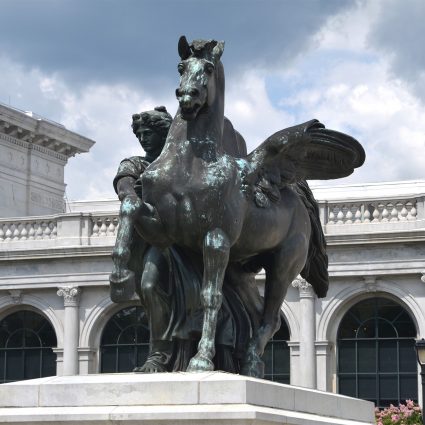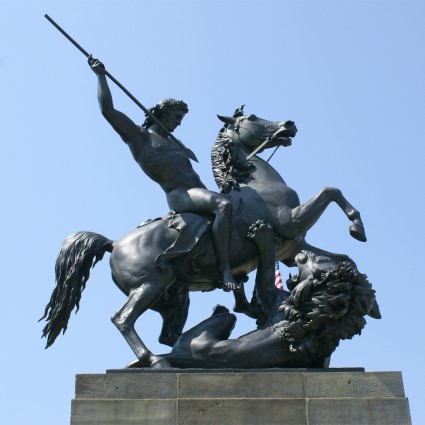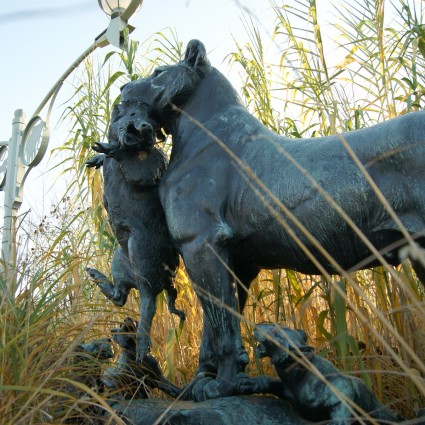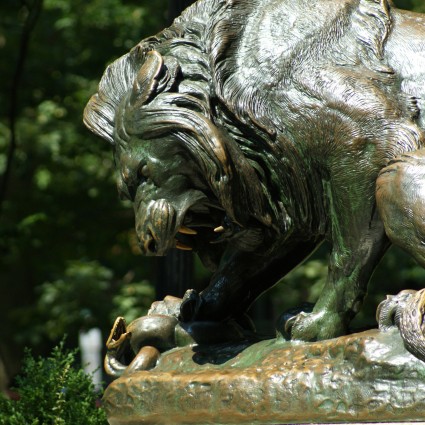At A Glance
The model for the sculpture won first prize at the Vienna International Exhibition in 1873
The emperor of Germany receieved the first casting of the piece, which was installed in the Imperial Garden in Berlin
The Fairmount Park Art Association (now the Association for Public Art) purchased the second casting
The artist was the younger brother of Albert Wolff, sculptor of The Lion Fighter
Of the many sculptures at the Philadelphia Zoo, The Dying Lioness is one of the best known. The model for the sculpture won first prize at the Vienna International Exhibition in 1873, and it soon caught the attention of Herman J. Schwarzmann,
The maternal instinct, stronger than death, has caused the dying lioness to give her last strength to the nourishment of her young; over the mother and the whelps stands the lion, the prominent figure of the group, who roars defiance, grief and rage.
master architect for the Centennial Exposition in Philadelphia, who shared his discovery with the Fairmount Park Art Association (now the Association for Public Art). The emperor of Germany had already been promised the first casting of the piece, which was to be installed in the Imperial Garden in Berlin, and he granted the Art Association permission to purchase a second casting. Upon arrival in Philadelphia, it was exhibited outdoors at the 1876 Centennial.
The artist was the younger brother of Albert Wolff, sculptor of The Lion Fighter, and was known for his powerful and allegorical renderings of animals. The Fairmount Park Art Association’s Annual Report (1876) praises his depiction of “the maternal instinct, stronger than death, [which] has caused the dying lioness to give her last strength to the nourishment of her young; over the mother and the whelps stands the lion, the prominent figure of the group, who roars defiance, grief and rage.”
Adapted from Public Art in Philadelphia by Penny Balkin Bach (Temple University Press, Philadelphia, 1992).
RESOURCES



